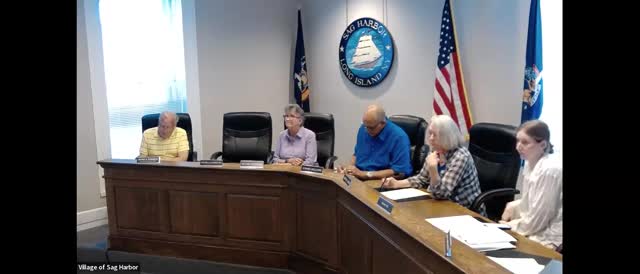Renovation sparks debate over historic preservation standards
July 15, 2024 | Sag Harbor, Suffolk County, New York

This article was created by AI summarizing key points discussed. AI makes mistakes, so for full details and context, please refer to the video of the full meeting. Please report any errors so we can fix them. Report an error »

In a recent government meeting, discussions centered around the controversial renovation of a garage converted into a studio, which has raised significant concerns regarding compliance with historic preservation standards. The project, which has already seen substantial changes, including a new roof and siding, was undertaken without prior approval from the relevant authorities, prompting scrutiny from the board.
During the meeting, a consultant provided a detailed report highlighting that while the majority of the renovation work has been completed, the alterations have transformed the structure to the point where it no longer resembles its original form. The consultant emphasized that the building is classified as a contributing structure in the national register, meaning its historical significance must be preserved. He recommended that the board deny approval for the changes, citing that the new aesthetics are incompatible with the historic character of the property.
Board members expressed concern over the implications of allowing such renovations without proper oversight. One member pointed out that granting approval could set a dangerous precedent, encouraging future projects to bypass necessary regulations. The discussion also touched on the financial implications of the renovation, with questions raised about potential penalties for the owners who proceeded without the required permissions.
The owners defended their actions by stating they were unaware of the building's historic status and argued that the previous condition of the structure was deteriorated and inoperable. However, board members reiterated the importance of adhering to preservation guidelines, stressing that historic properties must be maintained in their original state.
As the meeting concluded, the board faced a challenging decision on how to address the unauthorized renovations while balancing the need for historic preservation with the realities of property ownership. The outcome of this case could have lasting effects on future renovations of historic structures in the area.
During the meeting, a consultant provided a detailed report highlighting that while the majority of the renovation work has been completed, the alterations have transformed the structure to the point where it no longer resembles its original form. The consultant emphasized that the building is classified as a contributing structure in the national register, meaning its historical significance must be preserved. He recommended that the board deny approval for the changes, citing that the new aesthetics are incompatible with the historic character of the property.
Board members expressed concern over the implications of allowing such renovations without proper oversight. One member pointed out that granting approval could set a dangerous precedent, encouraging future projects to bypass necessary regulations. The discussion also touched on the financial implications of the renovation, with questions raised about potential penalties for the owners who proceeded without the required permissions.
The owners defended their actions by stating they were unaware of the building's historic status and argued that the previous condition of the structure was deteriorated and inoperable. However, board members reiterated the importance of adhering to preservation guidelines, stressing that historic properties must be maintained in their original state.
As the meeting concluded, the board faced a challenging decision on how to address the unauthorized renovations while balancing the need for historic preservation with the realities of property ownership. The outcome of this case could have lasting effects on future renovations of historic structures in the area.
View full meeting
This article is based on a recent meeting—watch the full video and explore the complete transcript for deeper insights into the discussion.
View full meeting
